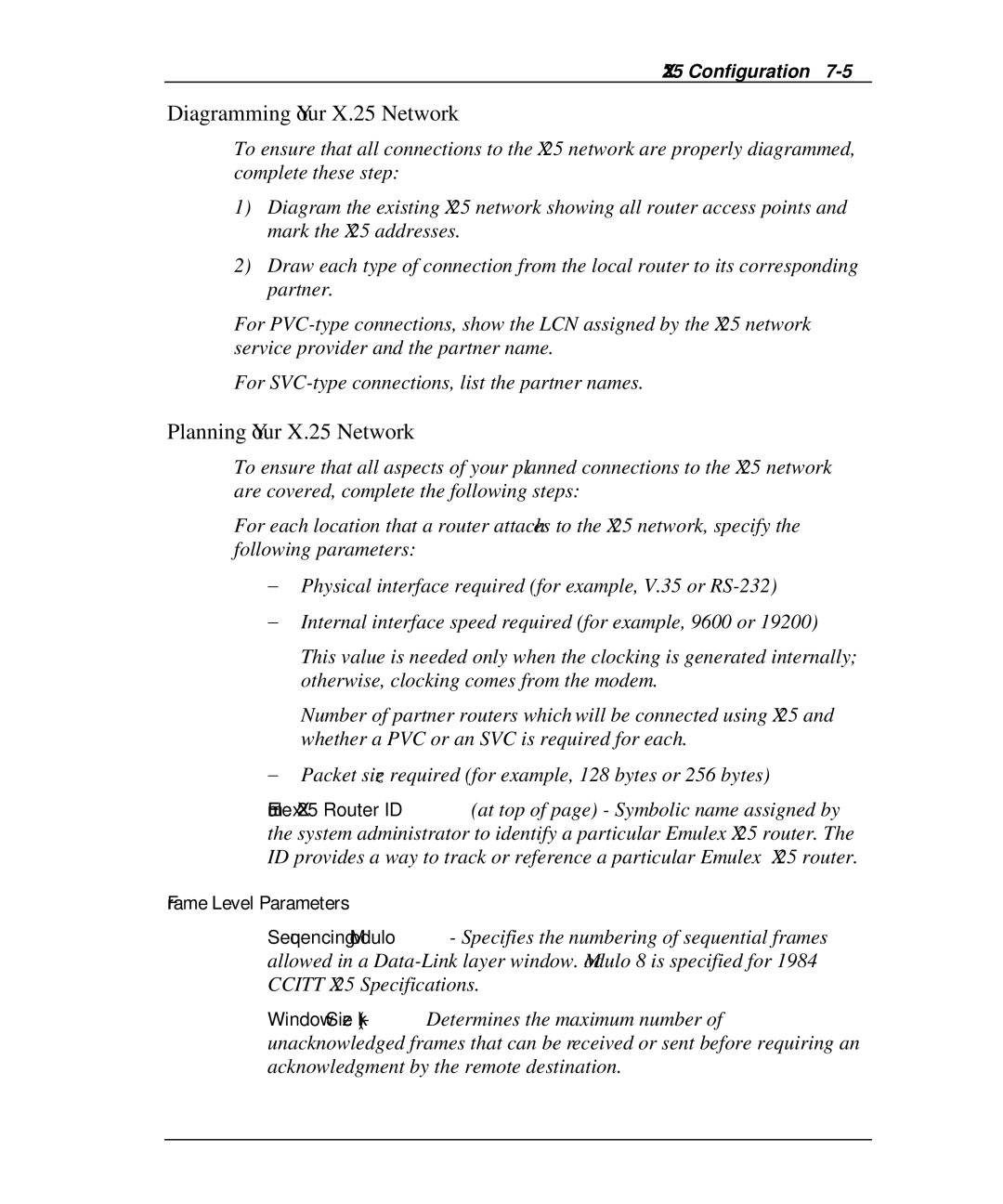
X.25 Configuration
Diagramming Your X.25 Network
To ensure that all connections to the X.25 network are properly diagrammed, complete these step:
1)Diagram the existing X.25 network showing all router access points and mark the X.25 addresses.
2)Draw each type of connection from the local router to its corresponding partner.
For
For
Planning Your X.25 Network
To ensure that all aspects of your planned connections to the X.25 network are covered, complete the following steps:
For each location that a router attaches to the X.25 network, specify the following parameters:
−Physical interface required (for example, V.35 or
−Internal interface speed required (for example, 9600 or 19200)
This value is needed only when the clocking is generated internally; otherwise, clocking comes from the modem.
Number of partner routers which will be connected using X.25 and whether a PVC or an SVC is required for each.
−Packet size required (for example, 128 bytes or 256 bytes)
Emulex X.25 Router ID (at top of page) - Symbolic name assigned by the system administrator to identify a particular Emulex X.25 router. The ID provides a way to track or reference a particular Emulex X.25 router.
Frame Level Parameters
Sequencing Modulo - Specifies the numbering of sequential frames allowed in a
Window Size (k) - Determines the maximum number of unacknowledged frames that can be received or sent before requiring an acknowledgment by the remote destination.
